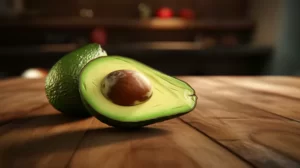Michael Pollan, a well-respected food writer, has recently criticized the paleo diet, something that has caused quite a stir in the health community. However, it seems he might have misunderstood the concept of the modern paleo diet, which many people defend as a healthier way of eating.
Don’t copy your ancestors—just follow their lead
Yes, it’s true that there is no single Paleolithic diet. Our hunter-gatherer ancestors consumed more than 200 different plants and animals throughout the year. However, modern-day individuals following a paleo-style diet aren’t trying to replicate these ancient diets exactly. Instead, they aim to emulate them, focusing on the consumption of natural whole foods that our ancestors would have eaten based on what was available and locally sourced.
In contrast, the typical Western diet is filled with processed foods and contains significantly fewer vitamins and minerals. The point of the paleo diet isn’t to follow a historically accurate meal plan, but rather to promote health and well-being by consuming whole foods.
The earth has changed—but basic food sense has not
Another argument against the paleo diet is that few of the foods we eat today resemble those our Paleolithic ancestors ate. While it’s true that many of the foods we eat have been altered through plant breeding and genetic modification, that doesn’t mean we can’t or shouldn’t eat the best foods available to us. It means we may need to eat even more vegetables and fruits to compensate for diminished nutrient levels.
Critics often point out that eliminating grains and dairy from the paleo diet removes important sources of nutrition. However, many cultures have thrived without consuming significant amounts of grain or dairy products. By following a hunter-gatherer-style diet with natural plant foods and meats (grass-fed and/or game meat, wild-caught fish), it’s possible to obtain all the necessary nutrients for optimal health.
Our ancestors lived longer than you think eating that way
Lastly, critics argue that people didn’t live very long during the Paleolithic era. While it’s true that the average lifespan was shorter, this was due to factors unrelated to diet – such as high childhood mortality rates. Those who survived childhood often lived long, healthy lives. Also, modern advances in medicine and a decrease in infectious causes of death contributed to the extension of the average human lifespan, not dietary improvements.
As societies transitioned from hunter-gatherer lifestyles to agriculture and eventually the industrial revolution, chronic diseases associated with diet increasingly became the cause of death. Today, diseases related to lifestyle – such as diabetes, obesity, and heart disease – continue to plague many individuals as sugar consumption has skyrocketed and a majority of Americans are overweight or obese.
In conclusion, the paleo diet isn’t about copying the hunter-gatherer lifestyle of our ancestors. It’s about understanding the principles behind eating whole, natural foods while avoiding processed and unhealthy options. By doing so, we can follow the lead of our ancestors and adopt a healthier, more balanced way of eating.



